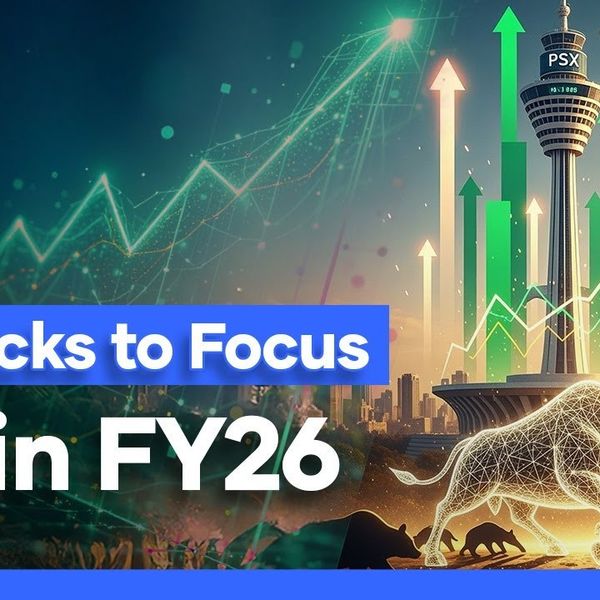Pakistan’s key interest rates at two-year low
Pakistan’s central bank cuts interest rates by 250 bps to 15%

Haris Zamir
Business Editor
Experience of almost 33 years where started the journey of financial journalism from Business Recorder in 1992. From 2006 onwards attached with Television Media worked at Sun Tv, Dawn Tv, Geo Tv and Dunya Tv. During the period also worked as a stringer for Bloomberg for seven years and Dow Jones for five years. Also wrote articles for several highly acclaimed periodicals like the Newsline, Pakistan Gulf Economist and Money Matters (The News publications)
Pakistan's central bank, the State Bank of Pakistan (SBP), reduced its benchmark interest rate by 250 basis points on Monday, the most aggressive rate cut ever.
This marks the fourth rate cut since June 2024, bringing it to a two-year low, aimed at addressing the falling inflation rate.
Analysts had anticipated a 200 basis-point cut, but the actual reduction exceeded expectations.
The cumulative rate cuts since June 2024 now total 700 basis points. The last time the interest rate was at 15% was in July 2022, and at 16% in November 2022.
October's inflation rate stood at 7.2%, slightly up from 6.9% in September but significantly lower than the 26.8% recorded in October 2023.
This rate cut has reduced the real interest rate to around 7.8%, down from nearly 10.3%.
The State Bank of Pakistan (SBP) assessed that the tight monetary policy stance continues to play an important role in sustaining the downward trend in inflation.
Moreover, a sharp decline in food inflation, favorable global oil prices and absence of expected adjustments in gas tariffs and PDL rates have accelerated the pace of disinflation in recent months.
Taking into account the inherent risks associated with these factors, the Monetary Policy Committee (MPC) assessed that the near-term inflation may remain volatile before stabilizing within the target range.
The committee noted the following key developments since its last meeting that could have implications for the macroeconomic outlook.
First, the IMF Board approved Pakistan’s new EFF program, which has reduced uncertainty and improved the prospects for realization of planned external inflows.
Second, the surveys conducted in October showed an improvement in confidence and a reduction in inflation expectations of both consumers and businesses.
Third, the secondary market yields on government securities and KIBOR have declined substantially.
Fourth, tax collection during the first four months of FY25 fell short of target. Lastly, while the global oil prices have exhibited significant volatility amidst escalating geopolitical tensions, prices of metals and agricultural products have increased notably.
The current account posted a surplus for the second consecutive month in September 2024; narrowing the cumulative deficit to $98 million in Q1-FY25.
Despite a substantial increase in imports, robust workers' remittances and higher exports helped contain the deficit.
On the financing side, foreign investment recorded a slight uptick in September. These developments, along with receipt of the first tranche under the IMF program, helped in further build-up of SBP’s FX reserves to $11.2 billion as on October 25, 2024. Going forward, imports are expected to pick up further amidst increasing economic activity.
The MPC assessed that relatively higher workers’ remittances and exports will help keep the current account deficit within the projected range of 0 – 1 percent of GDP.
This, together with the realization of planned official inflows, is expected to increase the SBP’s FX reserves to around $13 billion by June 2025.
According to SBP, during Q1-FY25, the fiscal and primary balances posted surpluses of 1.4 percent and 2.4 percent of GDP, respectively.
This improvement is mainly explained by record high SBP profit, which substantially increased the non-tax revenues.
In contrast, the FBR tax collection fell short of target during July-October. This implies that achieving the FY25 tax target will require significantly higher growth going forward.
On the expenditure side, lower interest payments are creating a sizable fiscal space that would help keep a check on the overall fiscal deficit.
Meeting the targeted primary balance, however, would be challenging. The MPC emphasized the importance of continued fiscal consolidation to support macroeconomic stability and reiterated the need for fiscal reforms, focusing on broadening the tax base and curtailing PSEs’ losses.
Risk
SBP now expects the average inflation for FY25 to be significantly lower than its previous forecast range of 11.5 – 13.5 percent.
The MPC also assessed that this outlook is subject to multiple risks, such as escalation in the Middle East conflict, recurrence of food inflation pressures, ad hoc adjustments in administered prices and implementation of contingency taxation measures to meet shortfalls in revenue.








Comments
See what people are discussing